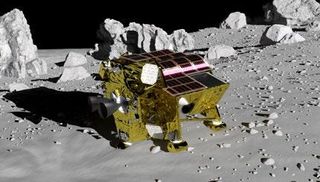Kathmandu: Japan’s Moon lander has resumed operations after being shut down for a week due to a power supply issue.
The Japan Aerospace Exploration Agency (Jaxa) said it re-established contact with the lander on Sunday, indicating that the glitch had been fixed. Its solar cells are working again after a shift in lighting conditions allowed it to catch sunlight, the agency said.
It could not generate power when it landed on 20 January as the solar cells pointed away from the Sun. With the Smart Lander for Investigating Moon (Slim) spacecraft, Japan became only the fifth country to achieve a soft touchdown on the Moon after the US, the former Soviet Union, China and India.
The spacecraft ran on battery power for several hours before authorities decided to turn it off to allow for a possible recovery of electricity when the angle of sunlight changed. In a post on X, formerly Twitter, Jaxa shared a photograph taken by Slim of a nearby rock that it nicknamed a “toy poodle”.
The lander will analyse the composition of rocks in its search for clues about the origin of the moon, Jaxa said. Slim landed at the edge of an equatorial crater known as Shioli, within 55m (180 ft) of its targeted touchdown location. Jaxa described it as an “unprecedented pinpoint landing”.
The landing technology could allow future exploration of hilly Moon poles seen as a potential source of fuel, water and oxygen, the agency said. The Slim mission came after earlier attempts by Japan failed, including one by the start-up iSpace, which saw its lunar lander crash when its onboard computer became confused about its altitude above the Moon.
Jaxa could not immediately say until when Slim will operate on the Moon. It has previously said the lander was not designed to survive a lunar night. A lunar night, which is when the surface of the Moon is not exposed to the Sun, lasts about 14 days.
Statistically, it has proven very hard to land on the Moon. Only about half of all attempts have succeeded. Prior to Japan, India was the most recent nation to join the elite club of countries that have achieved this. Its Chandrayaan-3’s rover touched down near the lunar south pole in August 2023 – an area on the Moon’s surface that no human had reached before.
Earlier this month, a US spacecraft launched by a private operator ended its lunar mission in flames over the Pacific. In August last year, Russia’s first lunar spacecraft in decades crashed into the Moon after spinning out of control.
News Source: AP
